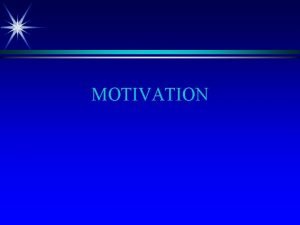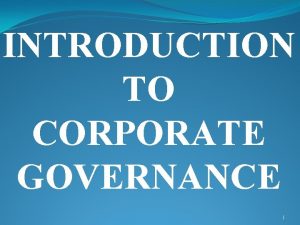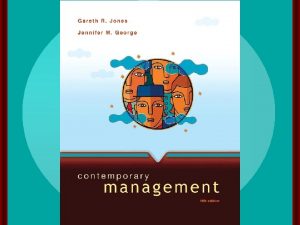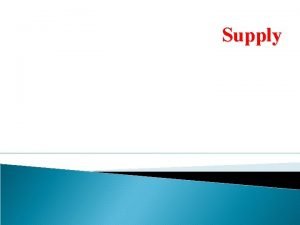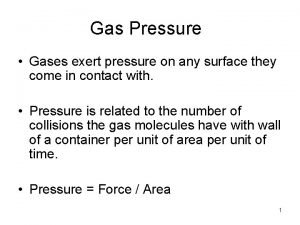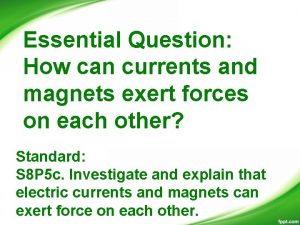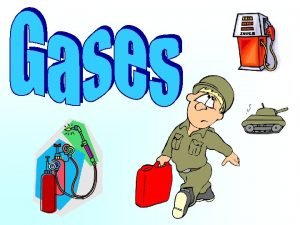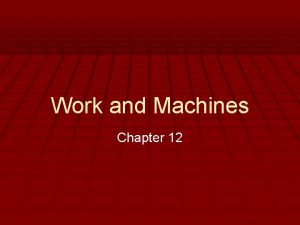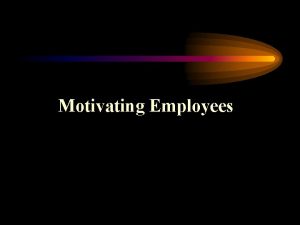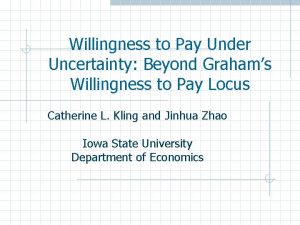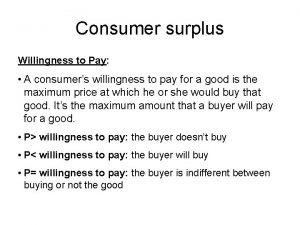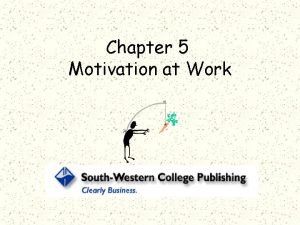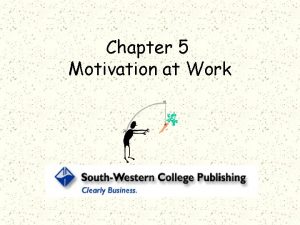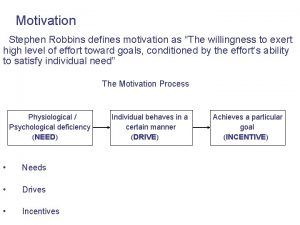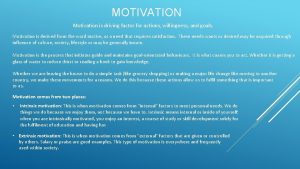MOTIVATION DEFINITION The willingness to exert high levels












- Slides: 12

MOTIVATION

DEFINITION The willingness to exert high levels of effort toward organization goals, conditioned by the effort’s ability to satisfy some individual need.

Motivation process Unsatisfied need Tension drives Search behavior Satisfied needs Reduction of tension

Motivation theories Early theories • Needs hierarchy theory • Theory X, theory Y • Hygiene theory Contemporary theories • ERG theory • Theory of needs • Goal setting theory • Equity theory

Hierarchy of Needs theory- Abraham Maslow self actualizaion esteem Social Safety Physiological

Theory X, Theory Y- Douglas Mc. Gregor Assumption by Managers Theory X • Employee dislike work& avoid work • Coerced and threatened with punishment • Avoid responsibilities • Place security above all Theory Y • Work is as natural as rest or play • Self directed and self controlled • Learn to accept and seek responsibility • Make innovative decisions

Hygiene theory – Frederick Herzberz Intrinsic factors are related to job satisfaction, while extrinsic factors are associated with dissatisfaction Hygiene factors • Company policy • Super vision • Relationship with supervisor • Work conditions • Salary • Relationship with peers • Status • security Motivators • • • Achievement Recognition Work itself Responsibility Advancement Growth

ERG theory – Clayton Alderer Existence Relatedness Growth • Providing basic material existence (maslow’s psychological and safety needs) • Interpersonal relationships • Social and status desires • (Maslow’s Social needs) • Personal development (Maslow’s Esteem and Self actualization needs)

Theory of Needs – David Mc. Clelland Need for Achievement (Drive to excel, to achieve in relation to a set of standard, to strive to succeed) Need for Power (The need to make others behave in a way they would not have behaved otherwise) Need for affiliation (The desire for friendly and close interpersonal relationships)

Goal Setting Theory – Edwin Locke Specific and difficult goals lead to higher performance • Goal commitment • Adequate self-efficacy (the individual’s belief that s/he is capable of performing a task • National culture

Equity Theory – J. Stacy Adams Individuals compares their job inputs and outcomes with those of others and then respond so as to eliminate any inequities. Ratio Comparisons Perceptions o/IA < o/IB ---------------inequity due to being under rewarded o/IA = o/IB ---------------equity o/IA > o/IB----------------inequity due to being over rewarded *o/IA represents employee, o/IB represents colleagues • Self –inside: experiences a different position inside his/her current position • Self-outside: experiences in a situation or position outside his/her current organization • Other-inside: another individual or group of individuals inside the employees’ organization • Other-outside: another individual or group of individuals outside the employee’s organization

Thank You
 The willingness to exert high levels of effort
The willingness to exert high levels of effort Corporate governance purpose
Corporate governance purpose The willingness of one person or group to have faith.
The willingness of one person or group to have faith. Willingness to supply
Willingness to supply Are pleasant terms substituted for more
Are pleasant terms substituted for more Thank you for your willingness to
Thank you for your willingness to Half smile dbt
Half smile dbt Willingness to pay
Willingness to pay Costa level 2
Costa level 2 How does a gas exert pressure
How does a gas exert pressure How do currents and magnets exert forces on each other
How do currents and magnets exert forces on each other Do gases exert pressure on whatever surrounds them
Do gases exert pressure on whatever surrounds them How does mechanical advantage work
How does mechanical advantage work
